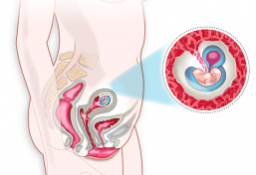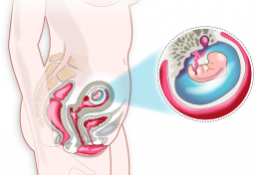Changes in the eighth month of pregnancy
The uterus puts pressure on the mother’s sciatic nerve
In the eighth month of pregnancy, the weight of the uterus can cause severe back pain, due to the pressure on the sciatic nerve. In addition, the mother-to-be will notice contractions, which are not yet labour pains. They help the cervix "rehearse" for when the baby is ready to be born.
Changes in the mother
In this month, the probability of suffering pain in the lower back increases, and this can spread through the buttocks, thighs and even down to the feet. It is sciatica produced by the compression of the sciatic nerve due to the posture adopted in pregnancy and the pressure exerted by the uterus.
Physical changes
- The pressure generated by the uterus on the pelvic veins, together with the increase in the levels of sexual hormones, causes the appearance of varicose veins of different sizes and colour in the legs.
- The pressure on the pelvis increases because the foetus is starting to position itself in the birth canal. This can induce cramps, vaginal swelling and enlargement. In addition, you will have a thicker, milky vaginal discharge.
- During the eighth month of pregnancy, the uterus will become harder more often, making the belly an irregular shape. These are Braxton Hicks contractions.
Braxton Hicks contractions
These low-intensity contractions are sporadic, irregular and pain-free. They are a kind of pre-birth rehearsal for the uterus as it prepares for its big task.
Common discomfort in the pregnancy
Swelling, cramps, heartburn, etc. are some of the most common discomforts at this stage of pregnancy. Learn some tips on how to reduce them.
Changes in the baby in the eighth month of pregnancy
- At the end of this month, the foetus weighs about 2,500 g and is over 35 cm long.
- From week 35, the lungs are fully developed, although a baby born at that time is still considered as premature or a “premmie”.
- Its skin becomes thicker, smoother and pinker. The fuzzy layer of lanugo hair disappears and, generally, a good amount of hair grows on the head.
- By this time, the foetus is usually already positioned with its head down, which is referred as cephalic position or presentation. Its movements are increasingly limited, as it has less and less space inside the uterus.










